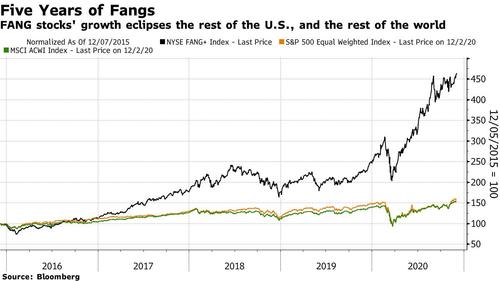
Why did prescription opioids bring so much misery to the small towns of post-industrial America?
The standard narrative is to put the blame on OxyContin, a powerful painkiller pushed on rural America by the profiteers at Purdue Pharma, which ended up filing for bankruptcy and settling criminal charges with the federal government for $8.3 billion. In this telling, the opioid epidemic is a morality tale of capitalism run amok and regulation made toothless by anti-government zealots.
Sally Satel, a practicing psychiatrist and resident scholar at the American Enterprise Institute, has a more complicated story to tell. In 2018, she moved to Ironton, Ohio, a small, economically depressed town in Appalachia. With the help of Hillbilly Elegy author J.D. Vance, she found a job working with patients and social service providers to better understand the opioid epidemic. Satel says that the opioid crisis didn’t start with OxyContin. It was a natural outgrowth of a century-old tradition of medicating pain as a way of tending to the broken bodies of the region’s laborers.
She stresses that “when the Purdue sales force came to small towns in Appalachia, it was pushing on open clinic doors.” While there’s no question that OxyContin was a particularly potent painkiller, it was merely the latest in a long line of legal and illegal substances used by people in the region to ease physical and psychological suffering. That’s one of the reasons why even after OxyContin was reformulated to reduce abuse and opioid prescriptions declined, overdoses and dysfunction are still commonplace.
Satel also challenges conventional theories of addiction, which typically characterize addiction as a disease like diabetes or Alzheimer’s. That narrative denies the agency of individuals with substance abuse issues and makes it harder to treat them. Substance abuse, she says, derives from both inborn predilections and environment. Effective treatment has to deal with both factors. In a deeply ironic way, many of the people who blame the opioid epidemic on bad pills see the solution as a different set of pills such as methadone, buprenorphine, and naltrexone. Satel stresses that the best way forward is to give individuals tools to make better use decisions while improving their chances to live lives with open-ended futures.
Photo credits: Credits: ID 118820734© Eshmadeva| Dreamstime.com, ID 67095798© Ljupco Dreamstime.com, ID 8248015© Gemenacom Dreamstime.com, ochre7 | thenounproject.com, Purdue Pharma building; Credit: Kris Tripplaar/Sipa USA/Newscom, Oxycotin pills; Credit: Kris Tripplaar/Sipa USA/Newscom, ID 83510092 © Pureradiancephoto | Dreamstime.com, ID 74433193 © Pureradiancephoto | Dreamstime.com, ID 83505630 © Pureradiancephoto | Dreamstime.com, Oxycodone; Credit: Robin Rayne/ZUMA Press/Newscom, ID 119487794 © David Wood | Dreamstime.com, ID 92374531 © Pureradiancephoto | Dreamstime.com, ID 186618334 © Darwin Brandis | Dreamstime.com, Oxycotin tablet and bottles; Credit: JEFF SINER/KRT/Newscom, ID 177835776 © Jon Anders Wiken | Dreamstime.com, Oxycotin protest; Credit: Erik McGregor/Sipa USA/Newscom, Painkiller protesters; Credit: Erik McGregor/ZUMA Press/Newscom, Ironton, Ohio; Credit: BRIAN SNYDER/REUTERS/Newscom, ID 83220881 © Sherman Cahal | Dreamstime.com, ID 42727529 © Auntkandis | Dreamstime.com, J.D. Vance; Credit: Jeff Malet Photography/Newscom, Ironton, Ohio; Credit: ID 109543668 © Sherman Cahal | Dreamstime.com, Oxycotin, close; Credit: Kris Tripplaar/Sipa USA/Newscom, Brain scan: ID 104709884 © Ded Mityay | Dreamstime.com, ID 104708862 © Ded Mityay | Dreamstime.com, Appalachia, Credit: Everett Collection/Newscom, Pills, Credit: Stephan Jansen/dpa/picture-alliance/Newscom, ID 12683852 © Reino Jonsson | Dreamstime.com, ID 51873792 © Marsia16 | Dreamstime.com, Alcoholic: ID 42516984 © Ocusfocus | Dreamstime.com, ID 42516940 © Ocusfocus | Dreamstime.com, ID 42516922 © Ocusfocus | Dreamstime.com, Addiction patient; Credit: Norma Jean Gargasz/agefotostock/Newscom, Powder in spoon; Credit: ID 143292811 © Eag1e | Dreamstime.com, Hand with pills; Credit: Gado Images/Smith Collection/Gado/Sipa USA/Newscom, ID 165273655 © Mark Youso | Dreamstime.com, Methadone: ID 140482461 © Newgixxer | Dreamstime.com, Hydrocodone: ID 153684292 © Jessica Fischer | Dreamstime.com, ID 173159293 © Soleg1974 | Dreamstime.com
from Latest – Reason.com https://ift.tt/2KSbZBq
via IFTTT



